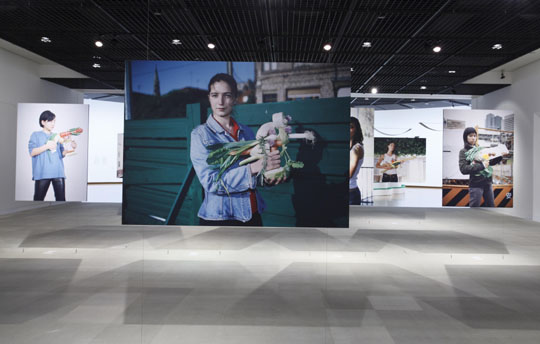Upon entering his current exhibition at the Hiroshima City Museum of Contemporary Art (MOCA), it is clear that although what he does can be described as making art, Tsuyoshi Ozawa is not an artist.
Born in Tokyo in 1965, Ozawa first gained notoriety in the 1990s through his "Nasubi Gallery" series of guerrilla exhibitions installed in wooden milk boxes in the streets of Tokyo's posh Ginza district. Inverting the Japanese pronunciation of the historic Nabis Gallery, located in Ginza, the "Nasubi Gallery" responded to the then-predominant rental-gallery system through which venues charged artists for exhibitions. With their interiors painted white to resemble a gallery space, the rectangular milk boxes provided Ozawa and other emerging artists an opportunity to exhibit their works without the customary prohibitive costs.
Since then, he has developed a reputation as a shape-shifting prankster whose works express irreverence toward high art through their use of collaboration and alter egos. Titled "The Invisible Runner Strides on" and organized by chief curator Yukie Kamiya, the MOCA exhibition provides a loose introductory framework to Ozawa's career by focusing on the artist's long-term serial projects.


















With your current subscription plan you can comment on stories. However, before writing your first comment, please create a display name in the Profile section of your subscriber account page.